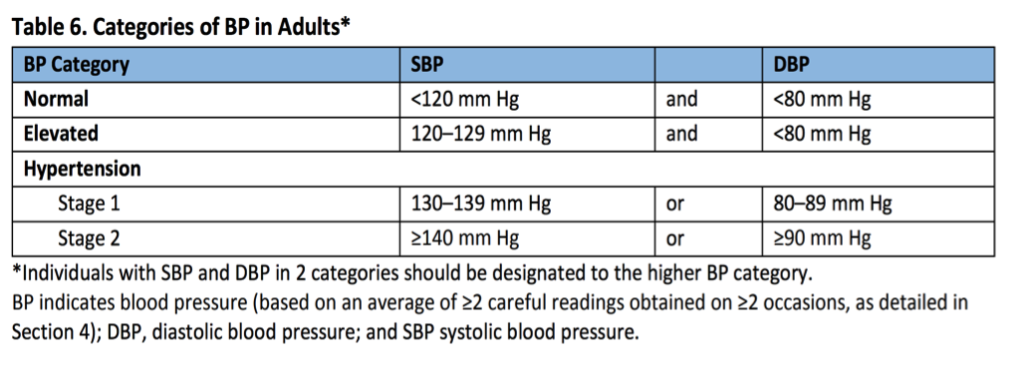This World Hypertension Day, Cardiac Wellness Institute aims to improve awareness about hypertension and it’s causes and provide some practical tips to keep blood pressure under control.

The term blood pressure or BP refers to the force of blood flow in our arteries, produced by the pumping action of the heart, and should be lower than 120 / 80 mmHg in healthy adults. As a fitness expert, the most important parameter that I rely on to assess a person’s heart health is their BP.
High BP or hypertension is a silent killer as most people do not know their BP is high and may end up with a heart attack, heart failure, stroke, or renal failure without any warning. The only way to diagnose hypertension in an individual is by checking the BP using a BP monitor (at a doctor’s office or at home).
The factors known to cause hypertension are lack of physical activity, unhealthy diet along with excess salt intake, being overweight or obese, psychological stress, tobacco use, alcohol consumption, and a family history of hypertension.
There are 4 stages of hypertension as shown below.
Prehypertension: 120-139 / 80-89: At this stage we can control the BP by lifestyle modifications such as eating healthy fibre-rich foods, exercising regularly, reducing weight, and managing stress adequately.
Hypertension Stage I (140-159 / 90-99) and Stage II (160/100 and above): The plan here is to bring the BP under control at the earliest with medications and lifestyle modifications.
Hypertensive crisis (above 180/110): This is a medical emergency and will need urgent intervention to avoid multi organ damage and sudden death.
How regular exercise affects BP:
Regular exercise makes the heart healthier. A strong heart can pump more blood with less effort. As a result, the force on the arteries decreases, lowering the BP.
Regular exercise also helps to maintain a healthy weight which is another important way to control BP. Even losing small amounts of weight can lower the BP. In fact, adequate BP control in heart patients paves the way for reducing medications and reversal of the heart disease.
To keep the BP under control, one has to exercise regularly. It takes about one to three months for regular exercise to have an impact on the BP. It is important to note that the benefits last only as long as you continue to exercise. A combination of aerobic and strength training exercises has been shown to provide the most heart health benefits.
As you see in the American Heart Association’s guidelines below, we have to engage in at least 30 minutes of aerobic activity such as brisk walking, cycling, swimming etc. on 5 days of the week and also do muscle strengthening exercises on 2-3 days per week. Examples of resistance exercises that will improve our muscle strength are exercises using our own body weight like pushups, planks, squats etc. or using equipment like weight cuffs, resistance bands, dumbbells etc.

Practical tips to keep BP under control:
- Taking medications as advised
- Being physically active regularly
- Reducing salt intake (to less than 5 grams daily)
- Eating more fruit and vegetables
- Limiting the intake of foods rich in unhealthy fats and trans fats (eg. fried / baked / packaged foods)
- Staying hydrated
- Getting at least 6-8 hours of sleep per day
- Avoiding the use of tobacco in any form
- Reducing alcohol consumption
- Splitting your exercise session into short bouts of 10-15 minutes 2 or 3 times a day if you are hard pressed for time
Patient stories:
Let me share a couple of real-life examples of how a lifestyle approach has helped in controlling BP in our clients.
A 54-year-old Civil Engineer, treated for hypertension and cholesterol issues for about 20 years, suffered a heart attack and underwent a bypass surgery. He enrolled in a 3-month cardiac rehabilitation program with us during which time we focused on supervised exercise training along with dietary modification and stress management counselling. He showed a lot of dedication and commitment to improve his health and we were glad to see his BP, cholesterol and other parameters coming under control beautifully.
A middle-aged working mother enrolled in our lifestyle program with a desire to reverse her hypertension and come off her BP medications which she had been taking for about 8 years. She had a young child and a demanding job, both of which had slowed down her self care attempts. We guided her on strategies to reduce her BP through exercise (effective walking and strengthening exercises for the limbs and core), following a balanced healthy diet rich in fibre and whole grains and focusing on breathing exercises to manage her stress better. Her overall wellbeing and lifestyle choices have improving significantly within a few weeks of joining our program and she is well on her way to achieving her health goal.
To summarise, hypertension is a silent killer but we can prevent, control and reverse high BP by being aware and acting in a timely manner. The mantra to follow is know your BP, consult your doctor, modify your health behaviour and keep your heart healthy.

